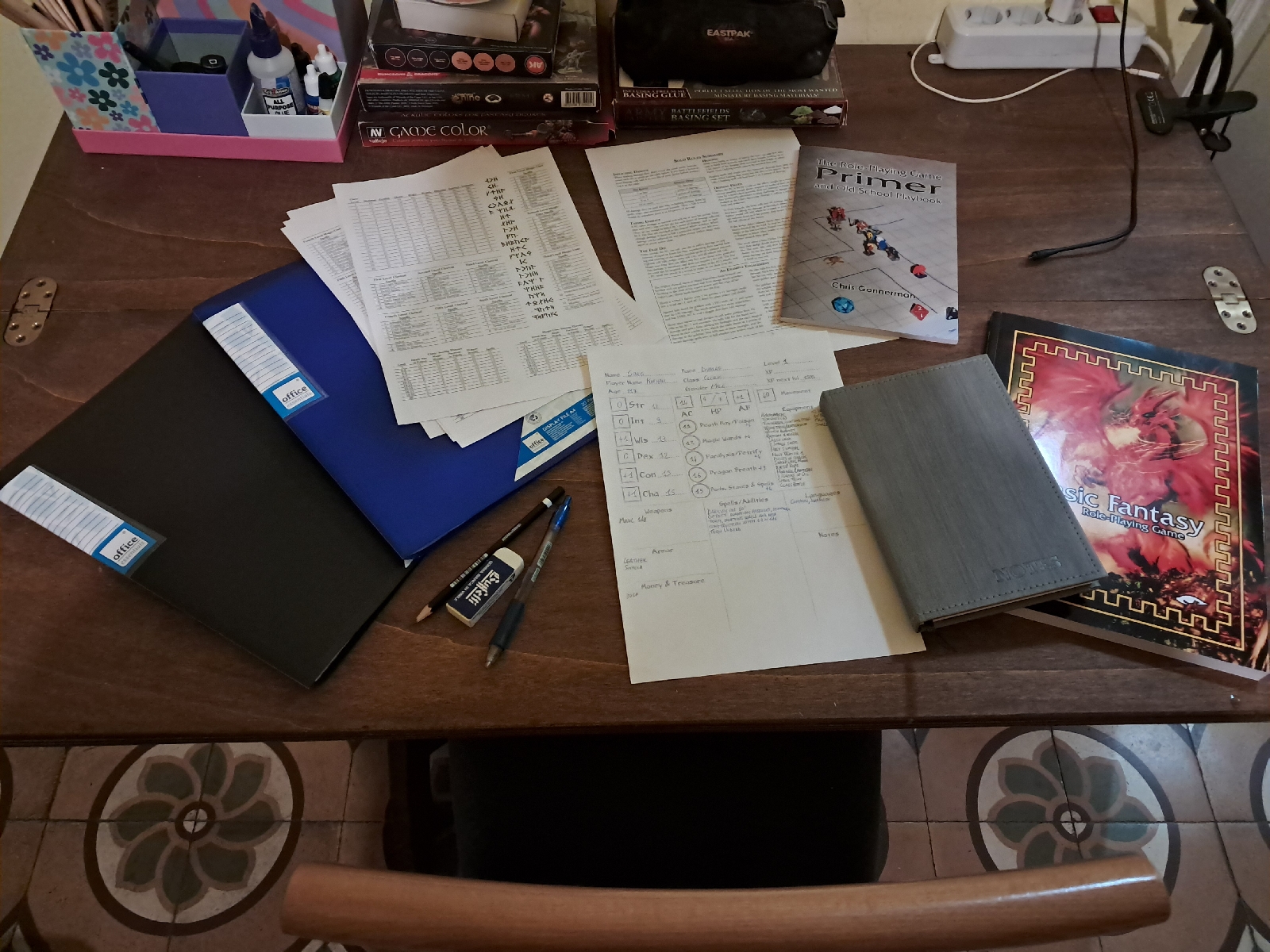The importance of a setting
Hello everyone, and welcome back to Delving Wolf!
In this week's post I want to talk about settings in TTRPG, specifically in a fantasy one (as that's the genre I'm most familiar with).
Even within the fantasy genre, the importance of a setting varies between games: some are defined by their official setting, others are more malleable and can be played either in a published setting or in a homebrew one; D&D 5e is an example of this.
There are many official settings for 5e, from Forgotten Realms, to Eberron (my personal favorite), to Greyhawk (with the new 2024 rules), to Dragonlance, to some more niche ones like Theros and the other Magic the Gathering-inspired settings; if we take previous editions in consideration, we can add many more like Mystara or Dark Sun.
While older settings have their rules, cities, regions, deities and habits clearly defined, often in multiple books or magazines (sometimes even with too much detail: do we really need to know the taste of Drow breastmilk? -seriously, if you don't know this notorius bit you can look it up), newer iterations of them have had the tendency to blur these lines quite a bit, leaving more space for DMs to "make it their own" and adapt them to their campaign; I myself have done it with my first ever campaign, which started with the Essential Kit, which is set around Phandalin in the Forgotten Realms, but then continued as a homebrew campaign with a story based on the player's backstories using a mix of adventures I found online and other I created (until the campaign fizzled out, that is) where I adapted the map and areas to what I needed, adding towns or changing the lore to fit the story I wanted to tell with my players. But at that point, were we even still playing in the Forgotten Realms?
In my second campaign (which is sadly on hold right now but I still hope to continue) I used Eberron, which has the big advantage of giving you a lot of lore to work with, but at the same time it leaves enough unanswered questions that you have a lot of room to make it your own without needing to stretch what's already there: in my case I only added the base of the Adventurer's Guild I created, but nothing else; instead, I leaned a lot on the themes of the setting and chose a few of the many, many factions present in the books to focus on, with still enough room to add more if the players end up being interested in something else. In this way, the players can feel a living world around them without me needing to come up with all these factions from the ground up (which can be a fun thing to do, it's something I really enjoy, but don't always have time for).
I've just started approaching the old-school adventures, be it OSR or older editions of the game, but one booklet I loved is The Gygax Challenge 75 by Ray Otus, which uses an article from Gygax as the base to create a playable world in 5 weeks: the result is not supposed to be a fleshed out world in every little detail like the official ones found in the books, but just enough to start a campaign; you and your players will fill the rest as the game goes, which can be super fun.
Taking this one step further, and stepping out of D&D for a moment, we have the Fabula Ultima approach, where the GM and the players sit together during session 0 to create the world collaboratively, each adding a bit to it: for example, after deciding together that your world will be formed by various kingdoms, one player might say that his character comes from the kingdom of Notria, and describe it.
This method asks the players to be more active participants in it, but if they're willing, the result could be amazing because it's the products of multiple minds working together, rather than just the GM's vision.
What I'm trying to get to is that there are many ways to approach this, and they're all valid:
- if reading about a setting inspires you enough to want to run a campaign in it, do it! You'll have a lot of lore to pick from when coming up with adventure ideas to give your players;
- if something in the setting you're playing in doesn't quite work for your campaign, just change it! It's your game, and nobody should tell you how to run it, as long as everyone has fun.
- if you don't want to use a published setting but to create a whole living world by yourself, go ahead! That's basically another game in itself, and can be super rewarding.
. if you don't want to flesh out a whole world, but just enough to start playing, and add to it as time goes and as it's needed, awesome! The world will react to what happens in the campaign and can surprise even you when it comes up.
. if you want to include your players and create the world with them, that's what you should do! Three, four, five heads will for sure have a bigger variety of ideas than one, and once again, this can even take multiple sessions and be a game in itself (in fact, there are games that do exactly this! Though I'm not familiar enough with them to suggest any in particular, I encourage you to look them up, if this is something that might interest you).
The only thing that matters is that this is a game, and that everyone, both the players and the DM/GM/Referee, have fun playing it and planning it.
This is all for this week, see you next Sunday for my next post!
May your dice never betray you,
Kirhon



Comments
Post a Comment